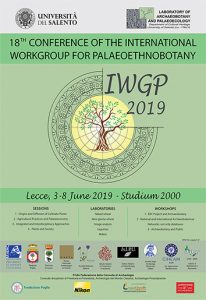
Session 60: ‘Beyond “founder crops”: new insights into understudied food plant resources’.
The beginning of agriculture is seen as the major transition in the human past, a changeover that strengthened sedentary lifestyle, drastically reduced the risk of famine and the dependence on the environmental conditions, and ultimately, allowed the human population to prosper.
Archaeological and genetic discoveries have shed light on the most relevant processes that accompanied the domestication of the so‐called “founder crops” (emmer, einkorn, barley, lentil, pea, chickpea, bitter vetch and flax). Nevertheless, the role of minor crops and weedy plants, as well as wild plants that could have been cultivated but eventually not domesticated, among hunter‐gatherers and early farmers is relatively understudied. With the increasing corpus of archaeobotanical data, together with the appearance of new and more powerful genomic, biometric and radiocarbon dating techniques, we are gaining new insights into plant cultivation and domestication that had not been possible before.
Within the framework of this session we would like to bring together researchers working on the cultivation of wild plants and the domestication of minor crops in Southwestern Asia, Northern Africa and Europe. We also encourage new archaeobotanical and paleogenomic discoveries to be presented, to track and date changes in the phenotypes and genotypes of plants that are considered marginal, but were instead crucial for the survival of ancient and modern‐primitive communities.
Papers that discuss the mechanism of exploitation of minor crops among modern traditional societies from an ethnographic perspective are considered relevant to the discussion.
The organizers
Valentina Caracuta (France) valentina.caracuta@umontpellier.fr
Institut de Science de l’Ecologie de Montpellier, France
Ferran Antolin (Switzerland) Ferran.Antolin@unibas.ch
IPNA/IPAS, University of Basel


